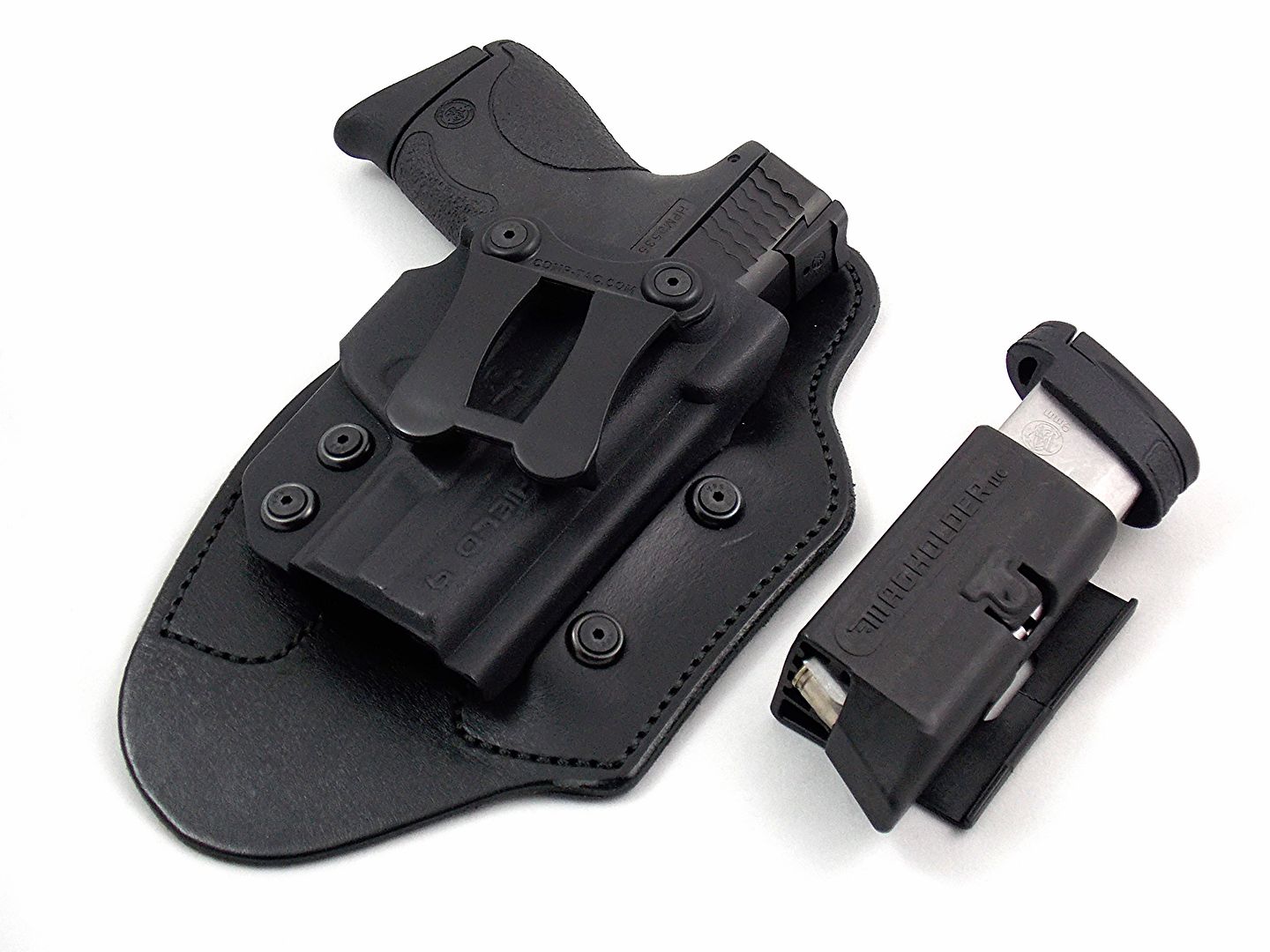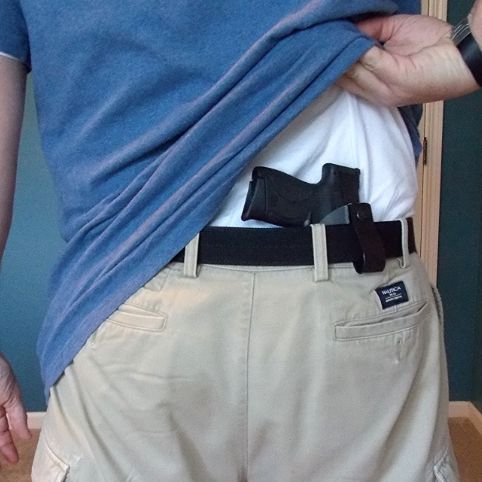Illinois was the last state to pass a concealed carry law and I was among the first to get a license last February. I did quite a bit of research prior to that and after a full year of carrying concealed, I’ve learned that there is a lot of disinformation on the Internet (imagine that) about the lifestyle, gear, and other topics related to concealed carry. If you’re a new license holder or thinking about getting a license, then hopefully I can dispel a few myths that will save you some time, dollars, and frustration. Such as…
“Concealed Carry is meant to be comforting, not comfortable.” Also, “You can carry any gun with the right belt and holster combination”.
These are my favorites and I can tell you now from experience that both statements are a load of crap. Anyone who truly carries on a regular basis knows that lugging a full-sized handgun is a grind. If someone on a gun forum tells you that they carry a full or even commander sized 1911 inside the waistband and they’re digging it then put them on ignore because they’re telling tales. The truth is you should go with the smallest and lightest gun in the most effective caliber that you can shoot well and realistically carry on a daily basis. For me, that was a M&P Shield in 9mm. It’s just large enough for me to control with precision chambered in a caliber that I feel will be effective with enough rounds (7+1/8+1) to do the job. When I carry the Shield, I notice the weight of it but it doesn’t cause me discomfort to the point that I want to leave it at home.
As a data point, the Shield 9mm weighs 24 ounces fully loaded. In comparison, a Kimber Pro Carry II in .45ACP with a 4″ barrel and aluminum frame weighs around 35 ounces fully loaded. A full-sized steel framed Mil Spec Springfield will clock in at around 46 ounces, which is basically like wearing a boat anchor.

The author’s carry gun, holster, and extra mag holder.
“External manual safeties are bad.”
The Glock crowd loves this one but I will tell you that the biggest psychological barrier for a new license holder (other than the possibility of taking a life) is feeling comfortable carrying a round in the chamber. For me, having an external safety on my firearm helped me get past it and that’s huge because a gun with an empty chamber is pretty much a paper weight. Most gun owners can’t draw and put two rounds center mass in the 1.5 seconds that it takes for an attacker to close a gap of 7 meters. Now add in cycling a round? Yeah, good luck with that. Could I forget to actuate the safety under stress? Yes, but that’s why I practice to develop the muscle memory to make it second nature.
“Clothing matters when it comes to printing.”
Yes and No. If you follow my advice earlier in this article, chose a realistic carry weapon, and pair it with a good holster/gun belt combination then your rig won’t print to the point where you need to start buying a whole new wardrobe. Also, I can tell you that in this age of distraction, your average citizen has piss poor situational awareness and is oblivious most of the time. That’s assuming of course that you’re not fiddling with the position of your firearm every five minutes or wearing that cute midriff baring number that has now turned your concealed carry into open carry.
“(Fill in the Blank Method of Carry) is the best.”
Inside the waistband, Outside the waistband, Appendix carry, Ankle Holster, Thigh Holster, Shoulder holster, and Off-body Carry – all legitimate options. Every person’s body is different. Carry needs vary. What works for one may not work for another. I prefer IWB at around 4:30 position because that’s the most comfortable for me.

Inside the Waistband. 4:30 position.
Try different types of carry to see which method works for you. You might end up with a drawer full of holsters in the process, but if you buy quality rigs (versus generic no-name gear) then you should be able to buy, sell, and/or trade until you find the method and kit that works for your situation.
The post What I’ve Learned After a Year of Concealed Carry appeared first on Loaded Pocketz.